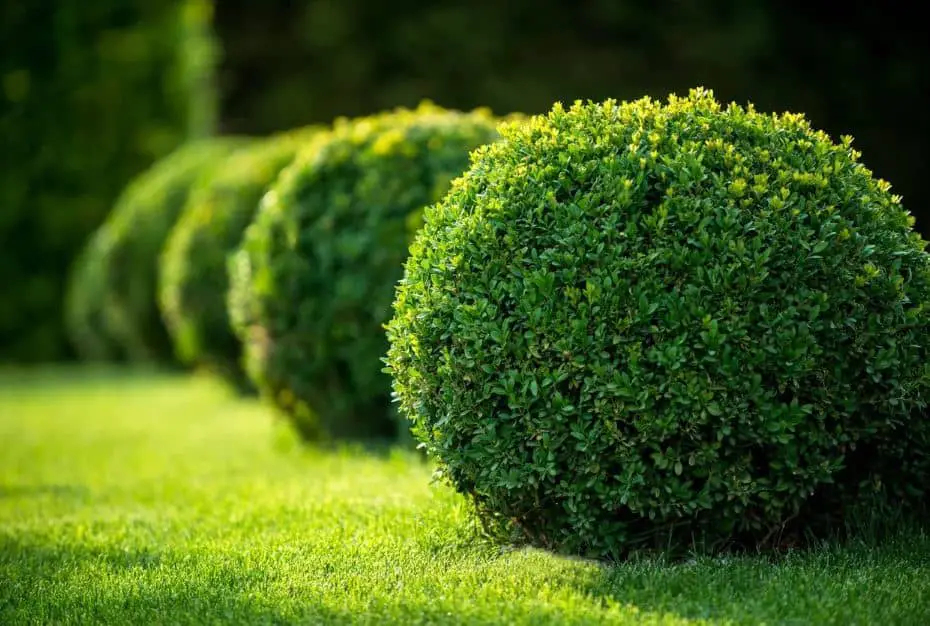A row of evergreen hedging is ideal for dividing your garden into a private space. Although you may certainly screen an area with a fence, wall, specialty paneling, or customized paneling, growing evergreen hedge bushes offer a more natural appearance that will mix in with the surrounding environment. It is also often a less costly choice. Unsure of what kind of evergreen hedge plants to seek out? Learn more about evergreen hedges by reading on.

About Hedging Evergreens
Despite their name, evergreens all shed a few leaves annually. Nonetheless, they maintain enough foliage compared to deciduous plants to provide year-round screening. Broadleaved and narrow-leaf evergreens are the two main varieties. Although broadleaved varieties shed older leaves throughout the winter or early spring, narrow-leaf evergreens, like pines and junipers, retain foliage that resembles needles and lasts for a few more years.
All evergreen plants need good soil drainage. However, species with wide leaves require more constant soil moisture than narrow ones. Also, compared to narrow-leaved evergreens, broad-leaved types need greater shelter from cold, dry winds and winter light.
Typically, screening evergreens reach maturity at the height of around the shoulder, when they have low branching habits and thick foliage. A combination of evergreen and deciduous plants in certain locations creates a screen that seems more natural than a straight line of evergreen trees or bushes.
Factors to Take into Account When Buying Evergreen Hedge Plants
While designing an evergreen hedge, the site should come first. Assess the plants’ mature size. Narrow-leaved evergreens are hardier and less particular about site requirements, whereas broad-leaved plants thrive under sheltered east or northern exposure with continuous soil moisture.
In any event, it is crucial to have loose, aerated soil with sufficient drainage. This implies that thick, primarily clay soil should be modified with a layer of organic material before planting.
Another factor to take into account is how much upkeep a plant needs. Prepare for additional upkeep if you want a military row of well-manicured evergreens rather than a more untamed natural appearance of broadleaved evergreens and deciduous plants.
Evergreen Hedge Plant and Shrub Types
Boxwood is the most popular evergreen hedge shrub. It is popular in formal gardens and is deer-tolerant. Boxwood performs best when placed in a protected area in either sun or shade. It is hardy to USDA zone 5.
The arborvitae is one of the most popular upright, narrow-leaved evergreens suitable for screening. The optimal conditions for growing arborvitae are full-light and confined places. The columnar Japanese plum yew is another evergreen that works well in small areas. This evergreen can grow in light or shade and is somewhat deer resistant.
The cleyera plant is another upright with glossy, dark-green leaves (Temstroemia gymnathera). Cleyera is quite adaptive and can withstand drought as well as deer damage.
White fir, Japanese Cryptomeria, Leland cypress, several holly kinds, Chinese and Rocky Mountain juniper, Eastern red cedar, Sweet Bay or Southern magnolia, Eastern white pine, Cherry laurel, & Canadian or Carolina hemlock are other evergreen trees that provide good screening.
Evergreen Flowering Plants for Hedges
Flowering hedge plants like California lilac (Ceanothus), hedge germander, ‘Firethorn’ Pyracantha coccinea, and Pittosporum tobira may be used to provide color. A fenced area will also be brightened with azalea, rhododendron, camellia, gardenia, pieris, and daphne.
Moreover, adding a splash of color, variegated shrubs like wintercreeper and Japanese pittosporum look particularly lovely when planted with other broadleaf and thin-leaf evergreens.

